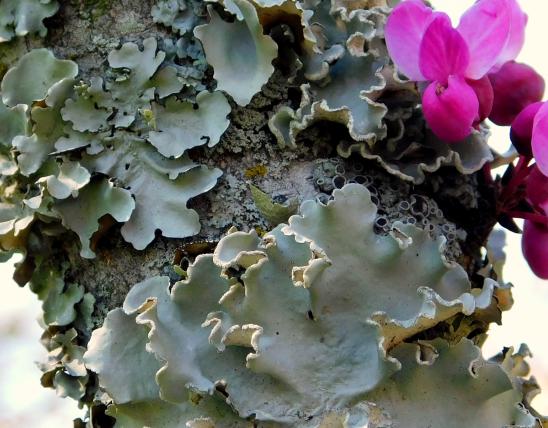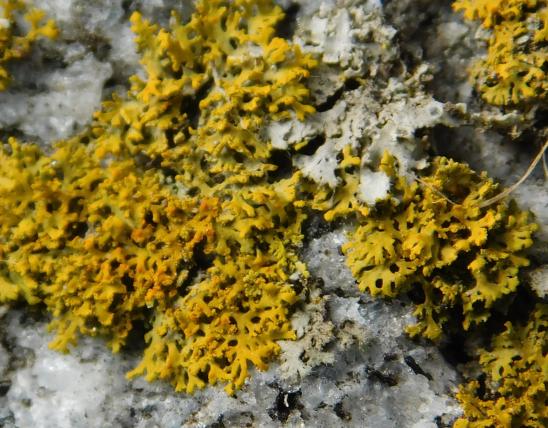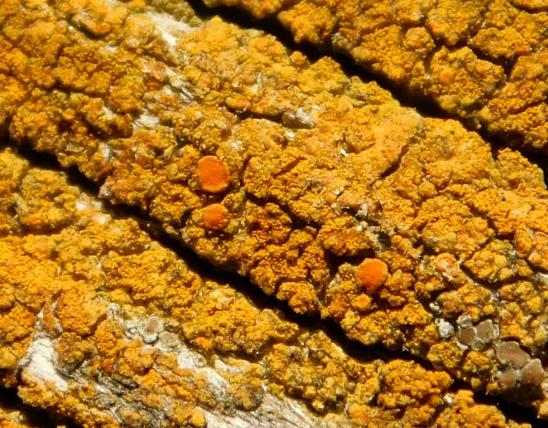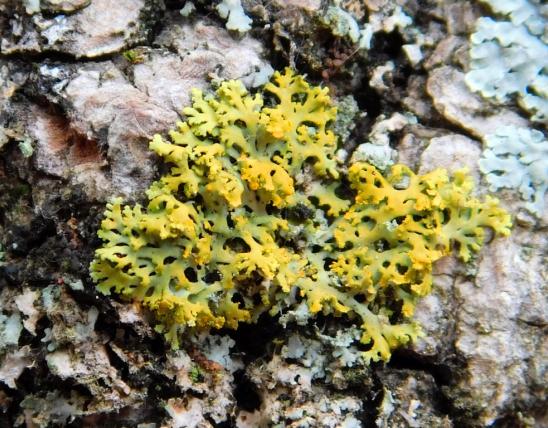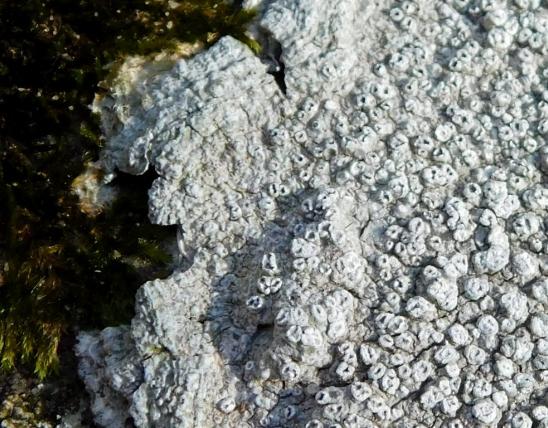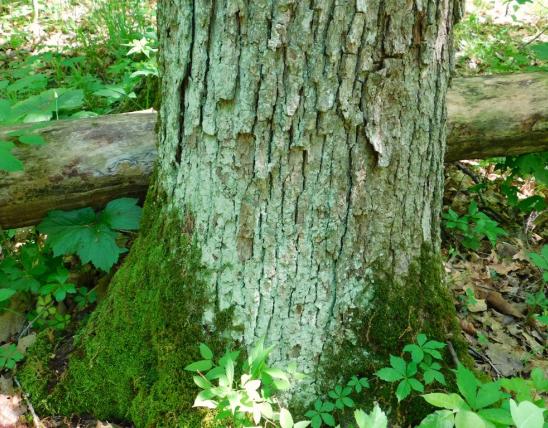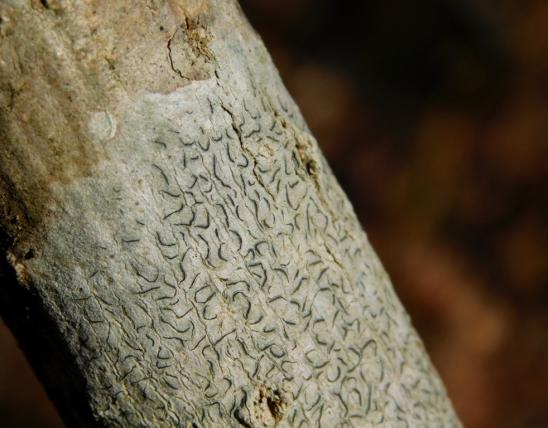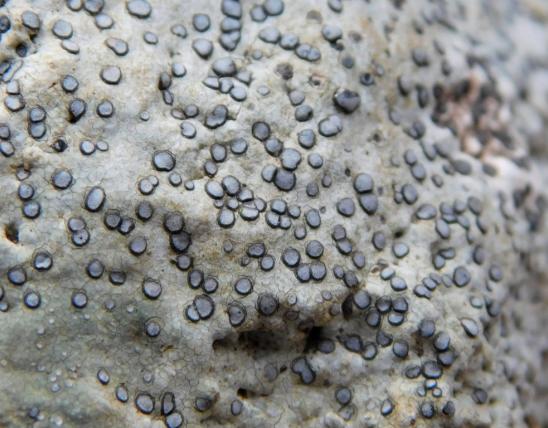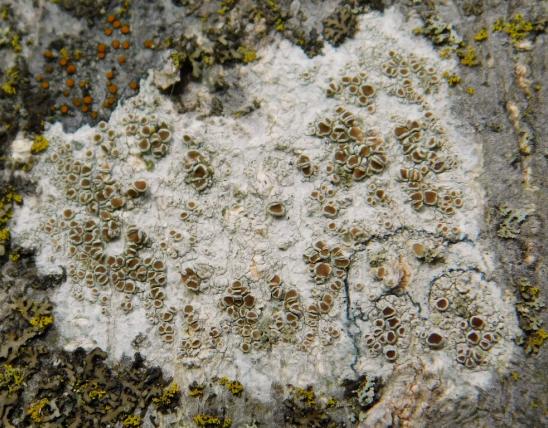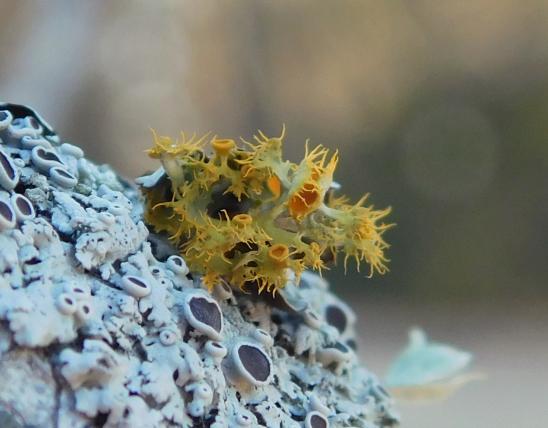
Firedot lichens are usually orange, yellow, rusty, or brown and look like tiny dots on a surface. There may be no obvious differently colored base (that is, the main body, or thallus), and only the dots may be visible. These dots are the spore-bearing structures (apothecia). To see these crustose lichens well, you often must get on your hands and knees and use a hand lens.
There are more than 125 species of firedot lichens (Caloplaca spp.) in North America, and Missouri has 23. Many are tiny, but groups of them can cover large areas on rocks or tombstones. Some species grow on tree bark or bare wood.
Despite the name, some in this genus are not very “fiery” — several species are light gray with dark gray, black, or dark brown dots.
Also, some firedot lichens grow in round patterns with edges that are so wrinkled that they appear foliose; then the centers may die and fleck away, leaving the rounded outline.
Like other crustose lichens, firedot lichens are tightly attached to the substrate they grow on. Their main bodies often look like a patch of paint (a faint spritz or thick, old, and weathered), and the surface may looked cracked or bumpy. Along the perimeter, there may be a dark outline, especially where two lichens meet.
A lichen is an organism that results when a fungus species and an algae species join together. Although the relationship between the fungi and algae is quite intimate and integrated, the lichen that is formed does not much resemble either of the components. Learn more about lichens on their group page.
Similar species:
- Goldspeck lichens (Candelariella spp.) are orange-yellow crustose lichens that are frequently seen growing on rock outcrops, tombstones, and other rocky substrates.
- Orange sunburst lichens (Xanthoria or Xanthomendoza species) can be very common on sunny rocks and tombstones. They have a circular, foliose growth pattern with tiny, branching lobes, but this pattern often becomes obscured when these lichens coalesce into large masses of tiny scale-like fragments and portions break off. For this reason, it could easily be misinterpreted as a crustose lichen.
- Candleflame lichen (Candelaria concolor), is very small, at most only about the size of a fingernail, although it often grows in groups covering large areas. Candleflame lichen almost always grows on bark and is a greenish (not orangish) yellow. Numerous granular soredia form at the thallus tips, making it look frilly at the tips. It is a foliose lichen, and you can usually see the rosette pattern, with branching, petal-like lobes, if you look closely. The similar-looking Candelaria fibrosa is also present in Missouri.
Lichens begin as tiny spots but may grow to cover several square inches. Groups of firedot lichens may coalesce to cover large areas.
Statewide.
Habitat and Conservation
Firedot lichens occur in sunny locations on cement sidewalks, gravestones, mortar, and limestone boulders and outcrops; in Missouri, look for them on glades. Some species grow on tree bark or bare wood.
Firedot lichens may be easiest to see after a rain, or on a sunny day in early spring when snow is melting, when sidewalks, retaining walls, rocks, and rock faces darken and the wet lichen's color intensifies.
Status
Common. Often overlooked.
Human Connections
Lichens contribute to a beautiful landscape. In desert, alpine, tundra, or other rocky habitats, they can coat rocks with a riot of bright colors — neon yellows, oranges, and greens — which intensify after a rain. In Missouri, good places to see lichens on rocks include glades and the open, rocky tops (balds) of Ozark hills. Visit places like Taum Sauk Mountain, Elephant Rocks State Park, Wildcat Glades, and Lichen Glade Conservation Area.
Look for firedot lichens on sidewalks, retaining walls, and other concrete or stone surfaces. Maybe you will spot their tiny orange apothecia cups in a mundane place on a drab, late winter day. It can uplift you during your lunch hour. Hello, little firedots!
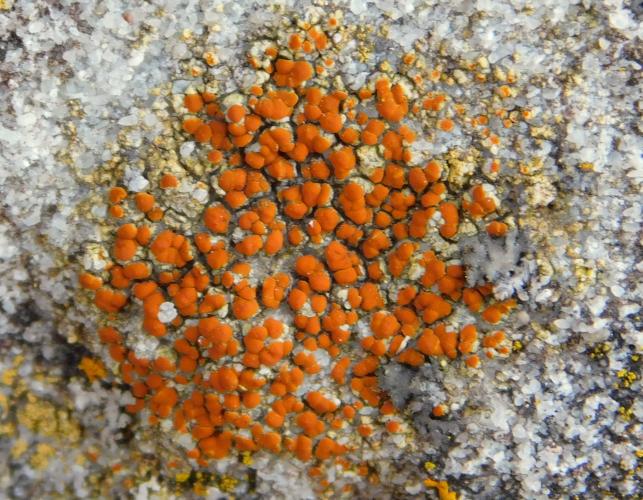
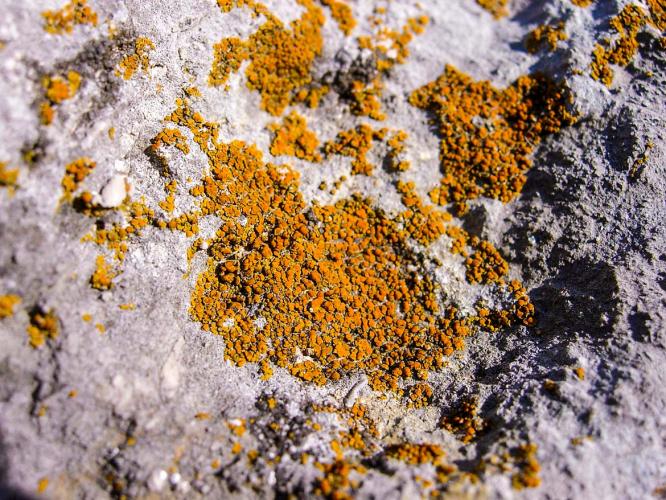
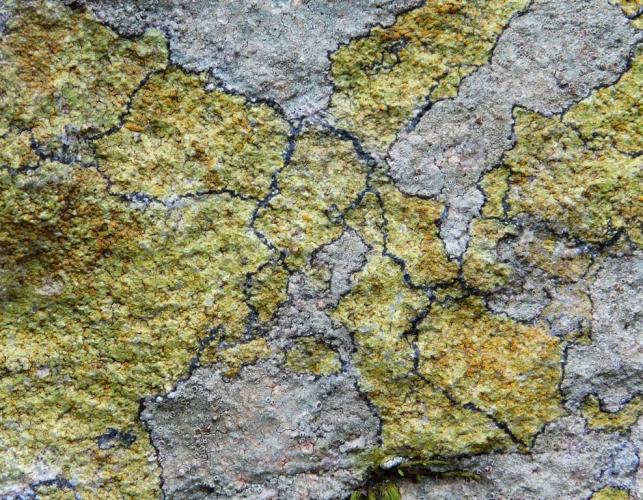
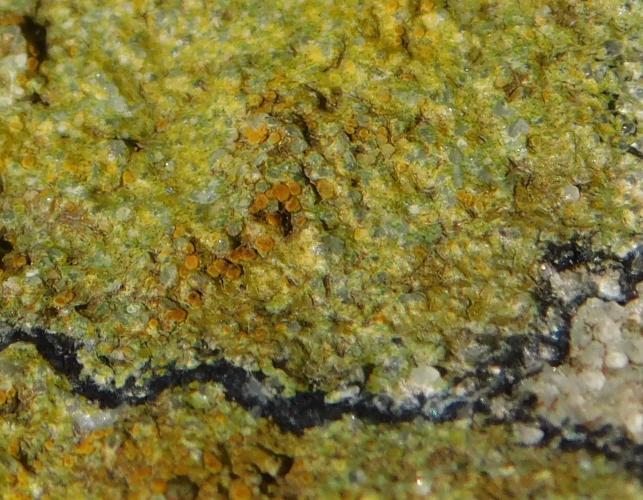
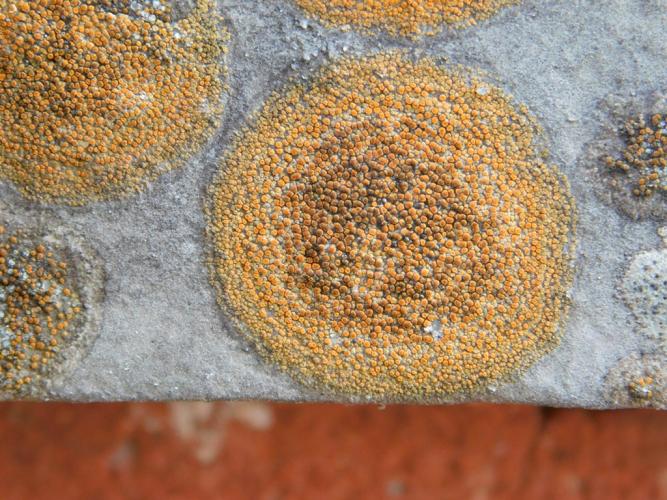
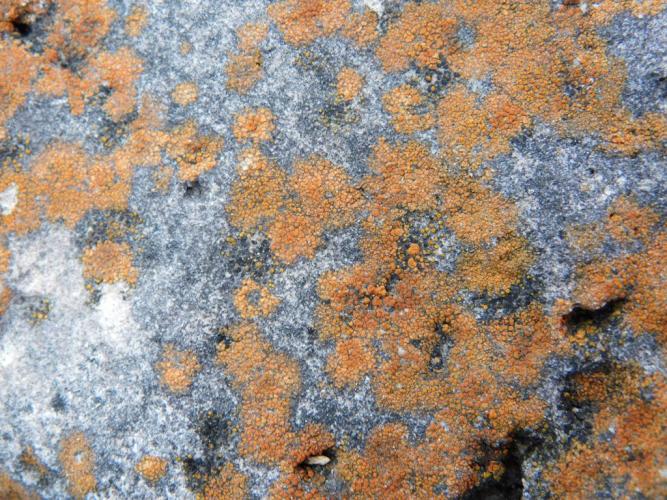
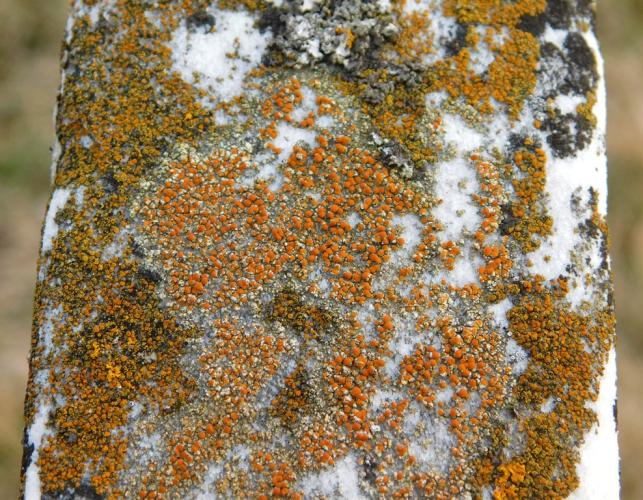
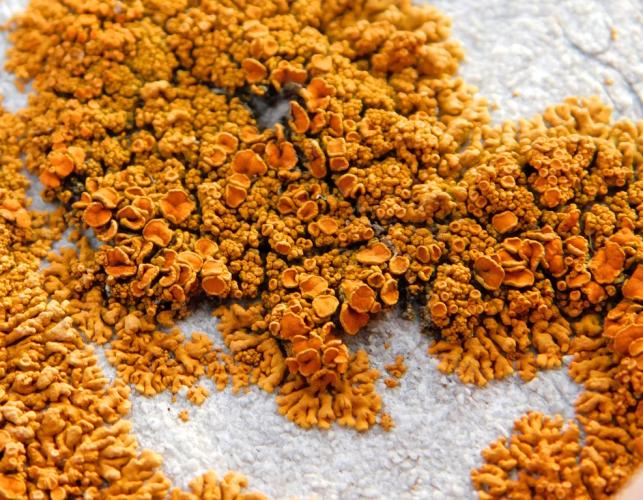
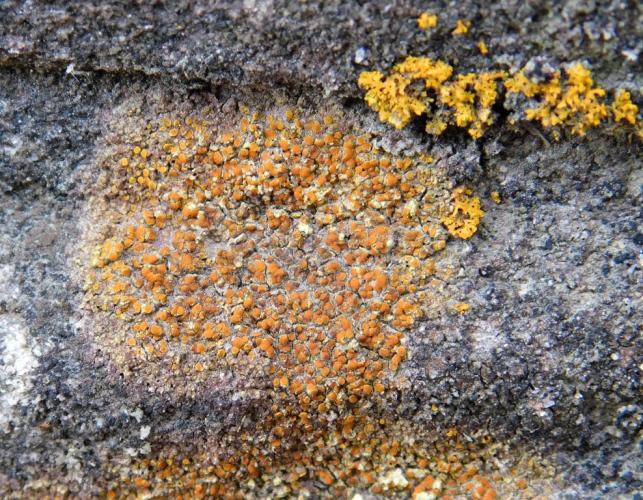
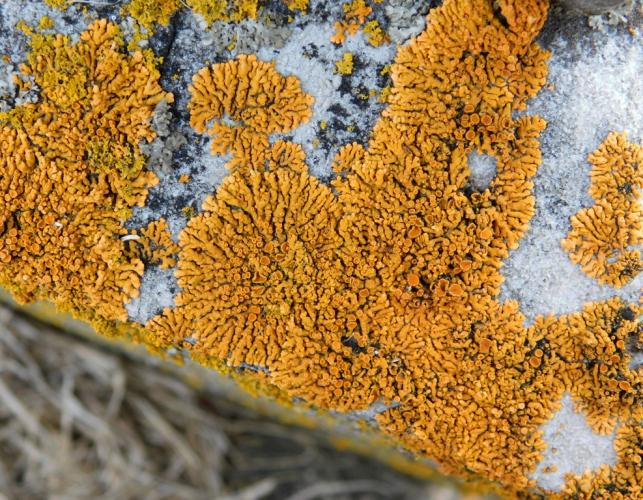
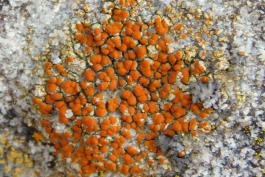
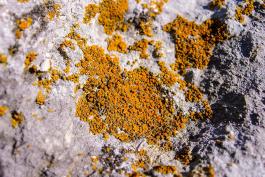
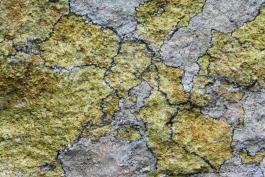
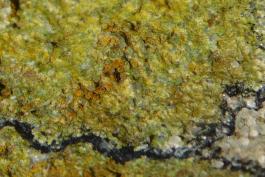
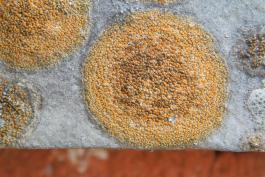
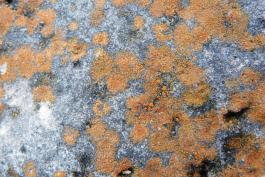
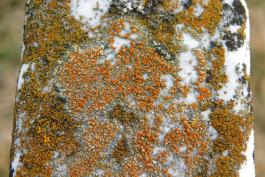
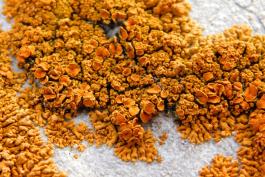
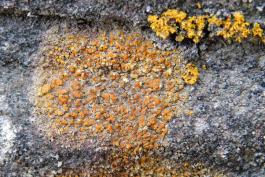
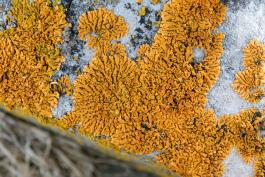
Mosses, liverworts, hornworts, and lichens seem rather similar, but these organisms are in very different groups. Mosses, liverworts, and hornworts are small, low plants usually found in damp habitats. Unlike more familiar plants, they lack veinlike structures and do not produce flowers or seeds — instead, they produce spores. Meanwhile, lichens are not plants at all: they are a collection of different fungi that have photosynthetic algae living within their tissues.






















